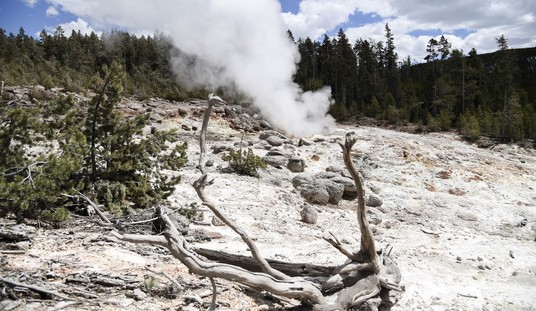
Photo Courtesy of DOD
At midnight on the 24th of October, 1983, two companies of U.S. Army Rangers boarded USAF C-130 aircraft for a flight south. Their mission, to land on and secure the runway at Port Salinas Airport on the island of Grenada. This would set the conditions for the reception of follow on forces tasked to rescue American students, remove Cuban forces and install a democratic government.
The original plan had been to land and disembark the troops for combat operations. During the flight, the unit commander learned that the Cuban advisors had blocked the runway with construction equipment, thus preventing the landing of aircraft. This changed the operation from an air-land assault (much simpler) to a parachute operation (much more complex and dangerous). As anyone can tell you, doing inflight rigging for parachute ops while stuffed in the back of a C-130 with over 60 other paratroopers is no mean feat.
The Rangers managed to get it done with their usual fortitude and at 0530 local time, began descending by parachute to engage enemy forces. By 1000 hours, the runway had been cleared and follow on forces had begun to arrive. Within a few days and in coordination with Naval, Marine and Air Force elements, major combat operations had ceased with all objectives met and American students airlifted back home to the United States.
The Grenadians now celebrate October 25th as Thanksgiving Day. Sounds like a pretty decent ending to a minor conflict and routine exercise of U.S national power, right? Not so fast. What we might consider today a fairly straightforward employment of a fairly small military force to achieve a limited objective was at that time, the first significant step in the rebirth of America’s ability to rapidly project military power and effectively use it to advance American interests.
Consider the events in the decade prior. During what we now consider the last battle of the Vietnam War, on December 12, 1975, the Khmer Rouge seized the U.S. container ship, Mayaguez and its crew. From then until December 15, the United States Military, at the direction of President Ford, undertook a series of piecemeal operations bent on rescuing the crew.
The crew was released by the Khmer Rouge, but due to faulty intelligence and poor inter-agency communication, this was unbeknownst to the U.S. forces in the area who assaulted and boarded the Mayaguez finding it empty. Simultaneous with the assault on the Mayaguez, was an assault on the nearby island of Koh Tang, in search of the missing crew wrongly believed to be held there. During the extraction of U.S. Forces, three Marines were left behind alive and were later executed by the Khmer Rouge. In short, we got lucky in that the crew of the Mayaguez was released by the Khmer Rouge. Given the poor operational planning, coordination and tactical intelligence, it could have been a lot worse than three brave marines being summarily executed after being abandoned by their compatriots in the confusion of the extraction.
Moving forward to January 16, 1979, the Shah of Iran, Mohammad Reza Pahlavi under pressure, departed in exile, soon to be replaced by a radical Islamist extremist mullah, Ayatollah Khomeini. Later, in November of that same year, Iranian college students stormed the U.S Embassy in Tehran, taking 52 Americans hostage. They were held for 444 days until Ronald Reagan succeeded Jimmy Carter as president of these United States. I won’t get into the detailed history regarding President Carter’s inept handling of our relations with Iran, a close ally, which resulted in its monarch, the Shah being deposed by an Islamist mullah bent on worldwide Islamic domination.
One of the reasons Carter lost to Reagan was attributed to a failed mission to rescue those American hostages. Eagle Claw, a U.S Military Operation took place on April 24, 1980. When all was said and done, the bodies of nine dead American Servicemen were left in the Iranian desert. Put on notice of American intentions, the Iranians scattered their American hostages throughout Tehran to make their rescue all but impossible, though U.S. planning for another mission continued until the election of Ronald Reagan and the real ease of the hostages made such preparations moot.
The postmortem of the operation was much the same as with the Mayaguez rescue operation. The same themes emerged-lack of, or bad intelligence, poor operational coordination, training and maintenance.
We move forward once again to October 23, 1983, just two days prior to Operation Urgent Fury in Grenada. On that date, a radical Islamist group known as “The Islamic Jihad,” detonated two truck bombs killing 241 U.S. Marines and 58 French military personnel, all serving as part of a multinational peacekeeping force. Again, the lessons learned are eerily familiar—intelligence, communication and one blast from the past from the Vietnam conflict, restrictive Rules of Engagement that had guards carrying unloaded weapons.
Although ultimately successful, even by today’s standards, Operation Urgent Fury exhibited many of those same issues, especially with Command, Control, Communication and Intelligence (C3I). Congress investigated not only this operation, but others including Eagle Claw and made some significant recommendations. Many of these were adopted as part of the Goldwater–Nichols Department of Defense Reorganization Act of October 4, 1986. In addition to the C3I issues (now C4I to include Computers) the biggest effect was to unify joint service operations under a single commander.
The effect of the new vision for Joint Operating Forces was realized on December 20, 1989, when U.S. forces began combat operations to depose Manuel Noriega, the president of Panama, sometime-U.S. CIA asset and international drug money launderer. Although like any military effort, there were glitches in the operation, the United States was able to rapidly deploy and employ over 27,000 troops, most of whom were not already in country. The number of targets that were taken down simultaneously was only exceeded by those taken out in the first Gulf War, which required a much longer build-up before the commencement of offensive operations. Within 14 days, offensive operations had ceased, Manuel Noriega had surrendered and was on a U.S. aircraft heading to his ultimate home in a U.S Federal Prison.
Desert Storm and Operations Enduring Freedom and Iraqi Freedom demonstrated two major, large scale capabilities of the U.S. military. On one hand, Desert Storm and later, Iraqi Freedom, both demonstrated our ability to mobilize, deploy and effectively employ heavy forces to another continent and in the case of Iraqi Freedom, execute regime change.* Enduring Freedom in Afghanistan demonstrated our capability to use Special Forces soldiers and unconventional/guerrilla warfare to unseat an in place government and install one friendly to the United States.**
When you look at how far our military has come since the dark days immediately post Vietnam, it’s much easier to see that Operation Urgent Fury was much more than a routine use of a fairly small military force to achieve some minor U.S. objective. It truly was the first step on a long road back to military competency. That said, our military competency is now being squandered as a result of political decisions by previous administrations. But, that’s the subject of another piece. Stay tuned.
*My assessment that the combat operations were successful in no way implies my belief that we were correct in executing them or that the execution of the endgame was proper.
**”Friendly” is a term subject to point of view.
Mike Ford, a retired Infantry Officer, writes on Military, Foreign Affairs and occasionally dabbles in Political and Economic matters.
Follow him on Twitter: @MikeFor10394583
You can find his other RedState work here.












Join the conversation as a VIP Member